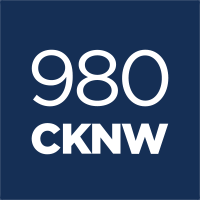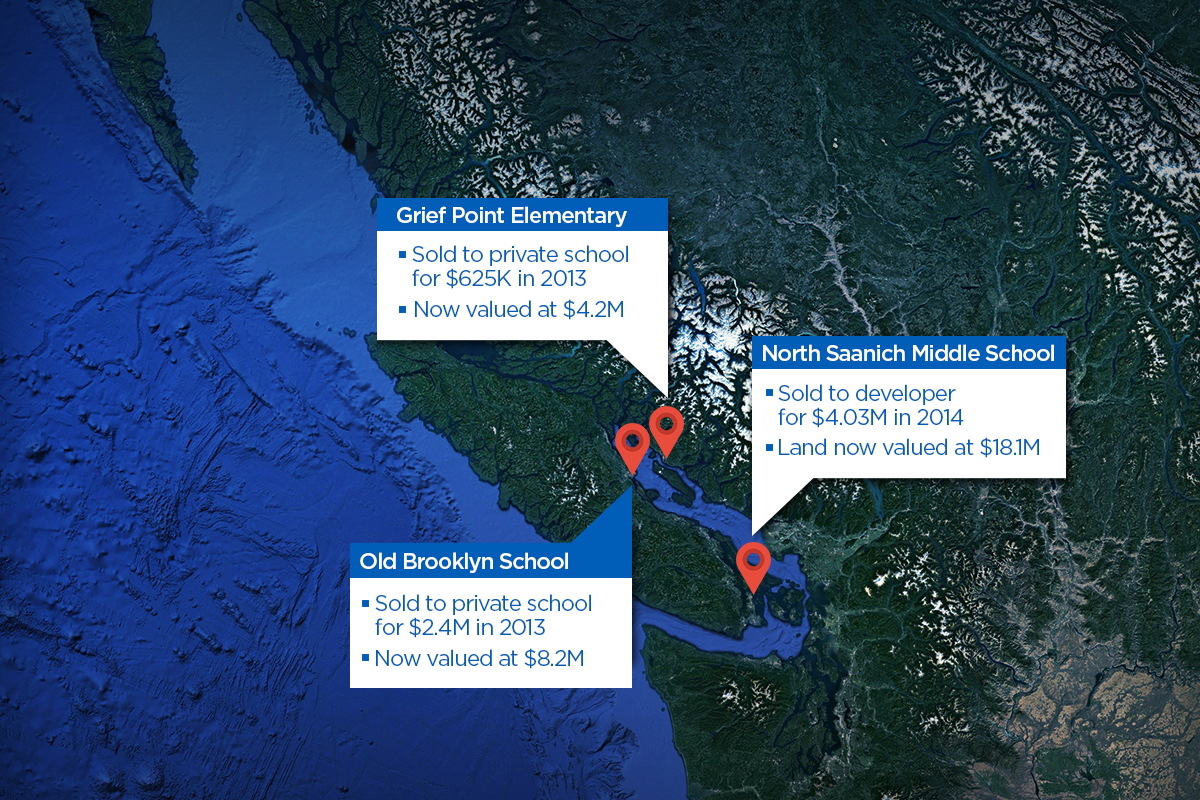$493 million — the money that the BC Liberals netted for provincial coffers when it sold a whack of land between 2013 and 2015.

$860 million — the approximate sum that the government of the time could have netted had they waited just a few years.
$367 million — the cash that the BC Liberals didn’t bring in, even as the housing market was booming.
The sums above represent the moneys that were had — and that weren’t had — as part of the provincial government’s “Release of Assets for Economic Generation” (RAEG) program between 2013 and 2015.
WATCH: From 2013 — the BC NDP slams the BC Liberals for their asset sales
The program was developed with the intention of making some cash and stimulating the economy.
But the provincial government didn’t exactly net “top dollar,” and a number of deals happened without an open and competitive bidding process, a Global News investigation has found.
The map below shows precisely where those deals happened in the 2013/14 and the 2014/15 fiscal years:
The BC Liberals were under fire from the then-opposition BC NDP when the program started selling assets.
They took particular exception with the $85-million sale of 14 lots on Coquitlam’s Burke Mountain to a developer who had donated to the then-governing party.
READ MORE: Tax hikes, asset sales, tight spending allows B.C. government to balance budget
The property had been appraised at a value of $128 million; a later appraisal, in June 2015, placed its value at $107 million.
But that was just one example of the BC Liberals selling Crown land for less than what they might have made later.
Like much of the land around Metro Vancouver, the value of the Burke Mountain lands has only continued to grow since they were sold.
Those lands alone have doubled in value to $165 million this year.
Another example — 10388 No. 2 Road in Richmond.
That’s a property that used to host Steveston Secondary School. But it was sold to developer Polygon in 2013, for $41.125 million.
Polygon has been a major donor for the BC Liberals, contributing $308,000 to the party since 2005.
They turned the property into Kingsley Estates, a luxury development with 133 units.
The land value there reached $177,743,000 in the 2017 BC Assessment.
READ MORE: Lower Mainland property assessments show white hot condo market, detached homes sagging
- Alberta to overhaul municipal rules to include sweeping new powers, municipal political parties
- Canada, U.S., U.K. lay additional sanctions on Iran over attack on Israel
- No more ‘bonjour-hi’? Montreal mayor calls for French only greetings
- Trudeau says ‘good luck’ to Saskatchewan premier in carbon price spat
Other school properties have sold, too.
In 2013, the site of the old North Saanich Middle School in Sidney was sold to a developer for $4 million.
Located kitty-corner to the new North Saanich Middle School, the site now houses Harbour Landing at Resthaven, a development that pitched “37 designer homes.”
The land is now worth more than four times what the site sold for — $18 million, and each home there has been assessed at about $800,000.
No one can accurately predict what a market is going to do. But sales happened at a time when property values were largely increasing.
And the provincial government did make money on those transactions — they helped boost asset sales to $601 million in 2013/14, and $135 million in 2014/15, according to an auditor general’s report.
Then-Citizens Services Minister, now BC Liberal leader Andrew Wilkinson said at the time that the sales spurred job creation in the thousands, and helped to realize hundreds of new housing units.
But the government of the time didn’t make nearly as much as it could have — and the sales came in a time period that was largely characterized by soaring property prices.
The Teranet National Bank House Price Index for the Vancouver area from January 2013 to December 2015, which covers the life of the program, shows prices climbing steadily in almost every year — though there are fluctuations in price growth from one year to the next.
Tom Davidoff, the director of the Centre for Urban Economics and Real Estate at UBC’s Sauder School of Business, said taxpayers could have netted better value had the previous government held a more competitive bidding process, and had certain types of housing been built on these sites.
“What’s really not acceptable from a taxpayer’s perspective is to sell land in a non-competitive way and not get affordable housing on it,” he told CKNW.
“So, to sell to a developer who is going to build market-rate housing, and not sell in a competitive way and get ripped off on the price, is a huge mistake.”
Davidoff said the government could have held a public auction that would have attracted “lots of well-qualified bidders.”
The competition
There are plenty of examples among these sales to suggest the process was anything was open and competitive.
The sale of two parcels of land in Surrey’s Fraser Heights area happened without any marketing or bidding; Ekam Development bought them for $1.6 million.
That land, since redeveloped, is worth $7.4 million now.
READ MORE: Realtor not surprised by latest bump in B.C. property values
B.C.’s Ministry of Transportation said in a statement that Ekam owned the neighbouring property and that its own parcels didn’t have any road access.
A similar process unfolded for the sale of a parcel of land off Abbotsford’s McCallum Road.
That, too, was sold to a neighbour because it didn’t have any access to the interchange. The property never hit the market.
Both sales represented missed opportunities for a government to influence the use of land, said Josh Gordon, an assistant professor at SFU’s School of Public Policy.
“It’s a common dynamic, where governments don’t always get full value for land… because they allow people to bid under what they could get,” he said.
And these sales have played a role in the housing crisis, Gordon added. He said the push for supply from the developers has been used to leverage the housing crisis and secure deals that have led to windfall profits.
“So, this would be a government not necessarily holding out and getting the most value in the context of the crisis and using that crisis as a pretext for not driving a harder bargain.”
Asked about the results of the investigation, Premier John Horgan said it was his party that first sounded the alarm on some of the deals.
Horgan said his government wants to make sure it doesn’t happen again.
“It’s not our intention to sell public assets at this point in time, but we will certainly strengthen whatever rules are in place to protect the public.”
(Image of Steveston Secondary School via City of Richmond Archives)













Comments